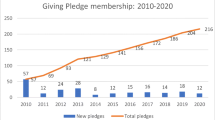Abstract
The Shakespeare Clinic has developed 51 computer tests of Shakespeare play authorship and 14 of poem authorship, and applied them to 37 claimed “true Shakespeares,” to 27 plays of the Shakespeare Apocrypha, and to several poems of unknown or disputed authorship. No claimant, and none of the apocryphal plays or poems, matched Shakespeare. Two plays and one poem from the Shakespeare Canon,Titus Andronicus, Henry VI, Part 3, and “A Lover's Complaint,” do not match the others.
Similar content being viewed by others
References
Boyd, Brian. “Common Words in Titus Andronicus: the Presence of Peele.”Notes and Queries, 240(1995), 300(September).
Campbell, Oscar James and Edward G. Quinn, Eds. The Reader's Encyclopedia of Shakespeare. New York: Thomas Y Crowell, 1966.
Douglass, Melinda.Applications of Genetic Algorithm. Claremont, California: Claremont McKenna College Senior Thesis, 1993.
Efron, Brad, and Thisted, Ronald. “Estimating the Number of Unseen Species: How Many Words Did Shakespeare Know?”Biometrika, 63(1976), 435.
Elliott, Ward and Robert Valenza. “A Touchstone for the Bard.”Computers and the Humanities 25 (1991), 199.
Elliott, Ward and Robert Valenza. “Who Was Shakespeare?”Chance, 4: 3 (Summer). See also, updated version, Claremont McKenna College: Claremont, California, June 24, 1991a.
Elliott, Ward and Robert Valenza. “Was the Earl of Oxford the True Shakespeare? A Computer-Aided Analysis.”Notes and Queries 236(1991b), 501 (December).
Elliott, Ward. “Letter to Donald Foster.” April 7–11, 1996 (updated).
Evans, G. Blakemore and Harry Levin.The Riverside Shakespeare. Boston: Houghton Mifflin, 1974.
Fisher, R. A., et al. “The Relation Between the Number of Species and the Number of Individuals in a Random Sample of an Animal Population.”J. Animal Ecol. 12(1943), 42.
Foster, Donald. “Elegy” by W.S.: A Study in Attribution. Cranbury, NJ: Associated University Presses, 1989.
Foster, Donald. “Reconstructing Shakespeare 1: The Roles that Shakespeare Performed.”Shakespeare Newsletter, 41(1991), 16.
Foster, Donald. Review of Hope,The Authorship of Shakespeare's Plays, 1994. - Archiv -, forthcoming.
Foster, Donald. “Shaxicon 1995.”Shakespeare Newsletter, 45(1995), 2.
Foster, Donald. “W S[hakespeare]'s ‘Best-Speaking Witnesses’: From Elizabeth Cary to SHAXICON.” Presentation to the Modem Language Association Convention, Chicago, 1996.
Halliday, F. E.A Shakespeare Companion, 1550–1950. London: Gerald Duckworth & Co, 1952.
Hamilton, Charles.Cardenio, or the Second Maiden's Tragedy. Denver: Glenbridge Publishing Co, 1994.
Heiatt, A. Kent, et al. “When Did Shakespeare Write Sonnets (1609)?”Studies in Philology, 88(1991), 69 (winter).
Hill, R. F. “The Composition ofTitus Andronicus.” 10Shakespeare Survey 60 (1957).
Hope, Jonathan.The Authorship of Shakespeare's Plays: A SocioLinguistic Study. Cambridge, England: Cambridge University Press, 1994.
Hope, Warren and Kim Holston.The Shakespeare Controversy: An Analysis of the Claimants to Authorship, and their Champions and Detractors. Jefferson, N.C.: McFarland, 1992.
Horton, Thomas. “Distinguishing Shakespeare from Fletcher through Function Words.”Shakespeare Studies, 22 (1994).
Jackson, MacDonald P.Studies in Attribution: Middleton and Shakespeare. Salzburg: Inst. f. Anglistik u. Amerikanistik, University of Salzburg, 1979.
Jackson, MacDonald P.A Lover's Complaint: Its Date and Authenticity. Auckland: University of New Zealand, 1965.
Jackson, MacDonald P. “Stage Directions and Speech Headings in Act 1 ofTitus Andronicus Q (1594): Shakespeare or Peele?”Studies in Bibliography 49 (1996).
Levi, Peter.A Private Commission: New Verses by Shakespeare. London: Macmillan, 1988.
Matthews, Robert and Tom Merriam. 1994. “A Bard by Any Other Name.”New Scientist, 22 (1994) 23 (January).
Matus, Irvin.Shakespeare in Fact. New York: Continuum, 1994.
Muir, Kenneth.Shakespeare the Professional. Totowa, NJ: Rowan & Littlefield, 1973.
Neuhaus, H.Joachim. Shakespeare's Word Formations. Hildesheim: Georg Olms Verlag, forthcoming.
Neuhaus, H. Joachim.The Shakespeare Database. CD-ROM. Westfälische Wilhelms-Universität, Munster, 1994.
Ogburn, Charlton Jr.The Mysterious Shakespeare: The Myth and the Reality. New York: Dodd, Mead, & Co, 1985.
Rasmussen, Eric. “Shakespeare's Hand inThe Second Maiden's Tragedy.”Shakespeare Quarterly, 40 (1989), 1.
Schoenbaum, Samuel.Shakespeare's Lives. New York: Oxford University Press, 1991.
Shakespeare Clinic.Matching Shakespeare, 1995. Claremont, California: Claremont McKenna College, 1995.
Shakespeare Clinic.Matching Shakespeare, 1990. Claremont, California: Claremont McKenna College, 1990.
Slater, Elliott.The Problem of The Reign of King Edward III: A Statistical Approach. Cambridge: Cambridge University Press, 1988.
Smith, M. W. A. “The Authorship of ‘A Lover's Complaint’: An Application of Statistical Stylometry to Poetry.”Computers and the Humanities 18 (1984), 23.
Spevack, Marvin.Complete and Systematic Concordance to the Works of Shakespeare. Hildesheim, Germany: Georg Olms Verlag, 6 vol, 1968-70.
Spevack, Marvin.The Harvard Concordance to Shakespeare. Cambridge, Mass.: Harvard University Press, 1973.
Spevack, Marvin.A Shakespeare Thesaurus. Hildesheim: Georg Olms Verlag, 1993.
Tarlinskaja, Marina.Shakespeare's Verse: Iambic Pentameter and the Poet's Idiosyncrasies, New York: Peter Lang, 1987.
Taylor, Gary. “Shakespeare's New Poem: A Scholar's Clues and Conclusions.”New York Times Book Review, p. 11, December 15 1985.
Thisted, Ronald and Brad Efron. “Did Shakespeare Write a Newly-Discovered Poem?”Biometrika, 74 (1987), 3, 445–55.
Valenza, Robert J. “Are Thisted-Efron Authorship Tests Valid?”Computers and the Humanities, 25 (1990), 27–46.
Waith, Eugene, Ed.Titus Andronicus. New York: Oxford University Press, 1984.
Wells, Stanley and Gary Taylor.William Shakespeare: A Textual Companion. Oxford: Clarendon Press, 1987.
Wright, S. P. “Adjusted P-Values for Simultaneous Inference,”Biometrics 48 (1992), 1005.
Author information
Authors and Affiliations
Additional information
Ward Elliott is the Burnet C. Wohlford Professor of American Political Institutions at Claremont McKenna College. He is interested in, and has published in, almost everything,including politics, pollution, transportation, smog and Shakespeare.
Robert J. Valenza is W.M. Keck Professor of Mathematics and Computer Science at Claremont McKenna College. He has written research articles in mathematics and metaphysics, as well as stylometrics. He is author ofLinear Algebra: An Introduction to Abstract Mathematics (Springer-Verlag, 1993).
Rights and permissions
About this article
Cite this article
Elliott, W.E.Y., Valenza, R.J. And then there were none: Winnowing the Shakespeare claimants. Comput Hum 30, 191–245 (1996). https://doi.org/10.1007/BF00055107
Issue Date:
DOI: https://doi.org/10.1007/BF00055107




